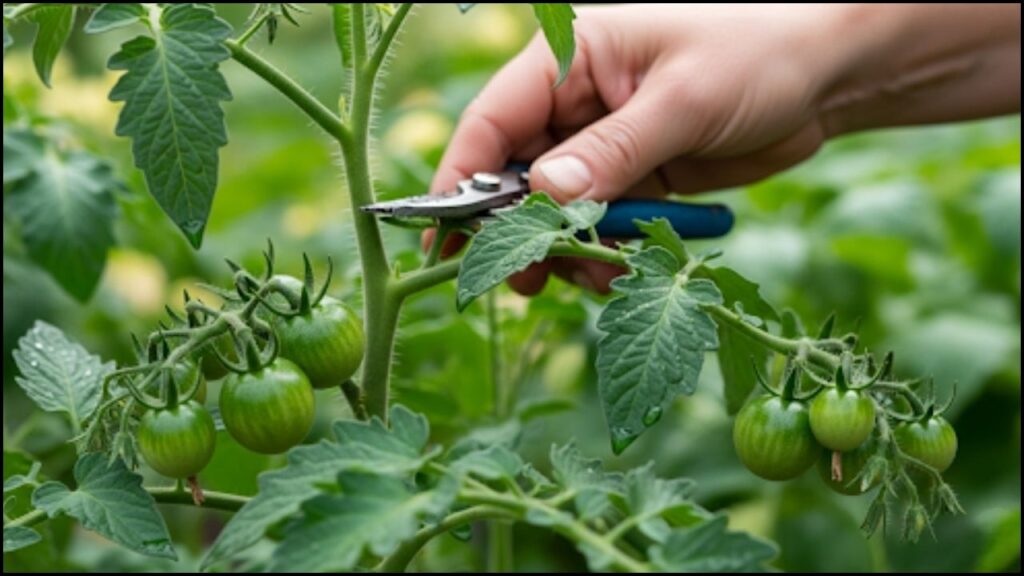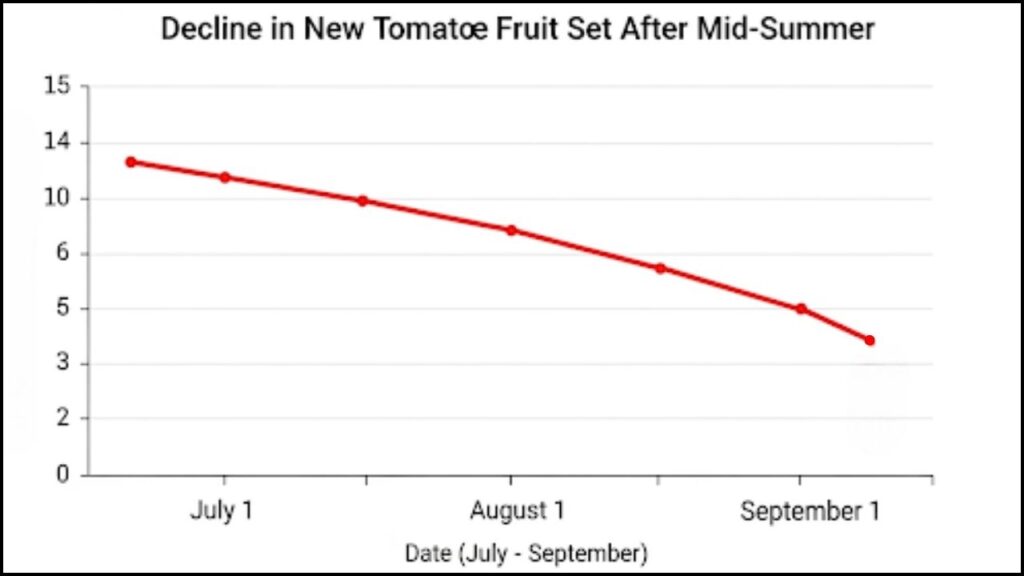
For many home gardeners, the question of when to stop pruning tomatoes in late summer is a common challenge. While early-season pruning encourages robust growth, continuing this practice too late can diminish yields and compromise the plant’s health. The optimal time to cease pruning depends on several factors, including the plant’s growth habit, the local climate, and the impending first frost date. Horticultural experts advise gardeners to make this decision based on plant maturity rather than the calendar alone.
Understanding the Role of Pruning
Pruning is the selective removal of specific parts of a plant, such as stems, leaves, and buds. For tomatoes, this technique is used to manage plant size, improve air circulation, and direct the plant’s energy toward fruit production instead of vegetative growth. Proper pruning can lead to larger, healthier fruit and reduce the risk of diseases like powdery mildew and blight.
“Pruning is essential for managing dense, bushy tomato varieties, particularly indeterminate types,” said Dr. Sarah Jensen, a professor of horticulture at the University of California, Davis. “By removing suckers and lower leaves, we help the plant focus its resources on ripening the fruit it has already set, rather than creating new foliage.”
However, this practice has a limited window of effectiveness. As the season progresses, a plant’s focus shifts from generating new growth to maturing existing fruit. Continued aggressive pruning late in the season can strip the plant of leaves needed for photosynthesis, which is crucial for ripening the final harvest.
The Critical Timing for Late-Season Pruning
Experts generally agree that the window for meaningful pruning begins to close in late summer. A widely accepted guideline is to stop all pruning activities approximately 30 days before the average first frost date in your region. This allows the plant’s remaining leaves to provide essential energy and protection for the developing fruit.

“The rule of thumb I give to students and home gardeners is to stop pruning suckers and fruit-bearing stems in late August or early September, depending on your location,” said Jason Mills, a master gardener and agricultural extension agent for the Oregon State University Extension Service. “This transition period is critical. After this point, any new flowers that form are unlikely to mature into ripe tomatoes before the first frost.”
Recognizing the Signs It’s Too Late
Determining whether it’s too late to prune goes beyond just the calendar. Gardeners can look for specific indicators on the tomato plant itself.
- Fruit Set: If the plant has stopped producing new flower clusters and is entirely focused on maturing its existing green fruit, aggressive pruning is likely counterproductive. The plant’s energy is already being directed where it is most needed.
- Plant Vigor: A healthy, vigorous plant with strong stems and green foliage may still benefit from minor pruning to improve air circulation. However, a plant that shows signs of stress yellowing leaves, wilted stems, or slowed growth should not be pruned. Pruning adds stress and can make the plant more susceptible to disease.
- Stem Hardening: As the season progresses, the stems of tomato plants become woody and less pliable. This is a clear sign that the plant has reached maturity and is no longer in a phase of rapid vegetative growth. Pruning at this stage can cause damage and is generally unnecessary.
The Final Pruning Cut: Topping the Plant
One final, specific pruning technique is “topping” the plant, which involves cutting off the main stem just above the highest fruit cluster. This forces the plant to divert all its remaining energy into ripening the existing tomatoes rather than continuing vertical growth.
“I recommend topping plants about a month before your first expected frost,” said Dr. Jensen. It’s a strategic move to ensure you get the most out of your harvest. It stops the plant from wasting resources on new growth that will never mature. However, this method should be used with caution and only when the harvest is nearing its end. Topping too early can reduce the overall yield.
Alternatives to Aggressive Pruning
Instead of extensive late-season pruning, gardeners can focus on other forms of care to support their plants:
- Remove Diseased Leaves: Late in the season, lower leaves often turn yellow or show signs of fungal diseases. Removing these leaves is beneficial because it improves air flow and reduces the spread of pathogens. This practice is distinct from the aggressive sucker pruning done earlier in the season.
- Support the Stems: As fruit matures, its weight can put a strain on the plant. Using stakes, cages, or ties to support heavy, fruit-laden stems can prevent breakage and ensure the fruit ripens off the ground, where it is less vulnerable to pests and rot.
- Monitor for Pests: With the plant’s energy focused on the fruit, it can be more vulnerable to pests. Regular inspection and targeted treatment can prevent infestations from damaging the final crop.
Looking Ahead to Harvest
The decision to stop pruning tomatoes in late summer is a strategic one, aimed at maximizing the final harvest before the season ends. While the urge to continue tending to a plant is strong, knowing when to let it focus on its final task is key to success. Gardeners who transition from a focus on growth to a focus on fruit maturation will often find their late-season yields are more robust and of higher quality. The final few weeks of the growing season are about patience and preparation, allowing the plant to do what it does best: ripen the fruit it has worked so hard to produce.
